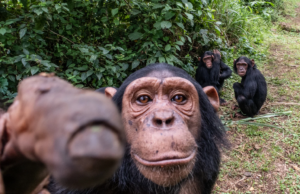FROM MICE TO MONKEYS
"We use healthy mice that take medicines to have symptoms similar to the ones of Parkinson disease. We also use paralyzed mice, with injuries in the spinal cord. In 2009 we are going to re-apply the study in tamarims, at Neurosciences Institute in Natal, Rio Grande do Norte"(Época Magazine, February, 23, 2009, page 83)
These phrases, which mean pain, death and sacrifice to hundreds of animals, were said by Miguel Nicolelis, a Brazilian researcher who is famous for his experiences with monkeys in United States. Now he is installing his research structure in Brazil, using money from bankers, aiming to produce a medicine with results, which is going to enrich a few, including him, without any concern about the pain and sacrifice that are going to be imposed to other living beings, who did not born to be experiment material to humans.
Science and Nature magazines are the biggest scientific stars nowadays. The ones who published in them enter the in the scientific research fame hall. But, to be accepted by these magazines, you have to have a lot of power. The experience lived by Dr. Sue Savage-Rumbaugh a few years ago, when her works with great primates were refused repeatedly by both magazines – because they dropped established paradigms artificially built by these publications – , is not a reality to Nicolelis and his bankers donators. Nicolelis is on the front page of Science magazine this month. Dr. Savage-Rumbaugh, who works with chimpanzees and bonobos for 40 years, discovered that bonobo Kanzi was able to understand human language with no previous training and was able to communicate with her and her team, the same as his sister Panbanisha. These bonobos dominate more than 500 words, more than a lot of humans in the world. This was unacceptable to the judges of these "respected" publications, as Avram Noam Chomsky, the most famous linguist of the Universe, who did not want to understand that language was no more a privilege of species Homo sapiens.
Miguel Nicolelis will start to torture our monkeys in Natal in the next few months, in order to make some handicapped people to walk and to improve the treatment of Parkinson disease, an old age illness. If any result comes out from these researches that will destroy dozens of lives of our biodiversity, maybe it will be to improve the procedures used to those who can pay for a millionaire treatment, as long as the benefit will not reach the general population.
Dr. Pedro A. Ynterian
President, GAP Project International

 Español
Español
 Português
Português








